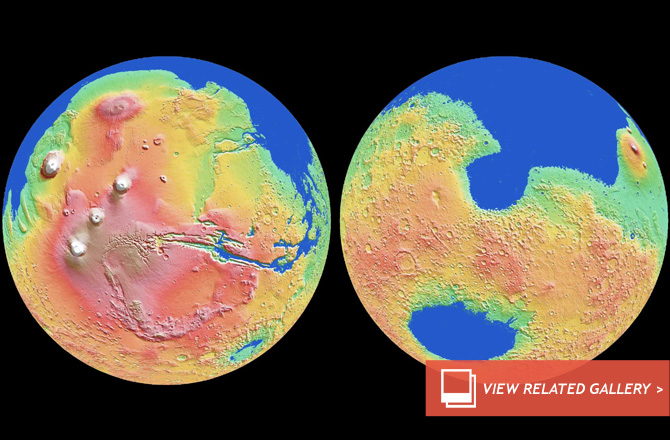Discovery News
October 25, 2013

We will eventually have the technology to make Mars a more habitable planet — but for whom? Earthlings, or Martians?
By definition, Mars terraforming would make it more Earth-like. Alternatively, Mars renovation would seek to resuscitate any native life that might have survived in environmental niches for billions of years. Astrobiologist Chris McKay, of NASA’s Ames Research Center, favors a non-geocentric term: planetary ecosynthesis, for establishing a robust biosphere on a planet’s surface.
Mars is certainly a prize for colonization. The Red Planet has as much surface area as all of Earth’s continents combined, making it the focus of several grassroots space pioneering groups.
But this presents a conundrum. McKay asks if a biologically rich and diverse Mars is more valuable than largely preserving the beautiful, but seemingly dead, world we are exploring today.
Regardless of the tenants, the first task at hand is to change the Martian atmosphere to make the Red Planet a warmer and wetter world. Mars’ large flood features indicate there is a lot of water locked in the planet; there was likely even an ocean 4 billion years ago. The world first needs to be thawed out.
Super greenhouse gasses — such as chlorofluorocarbons — could be introduced. This would warm the Red Planet and release frozen carbon dioxide for further warming. This would eventually allow for rivers and streams to again flow under a denser atmosphere. The Big Thaw would take a few centuries by McKay’s estimates.
